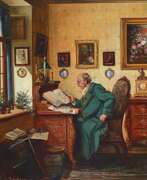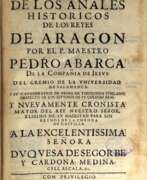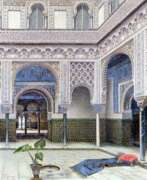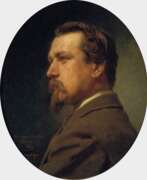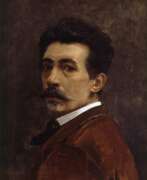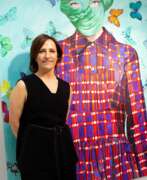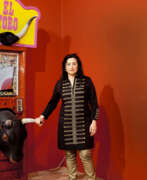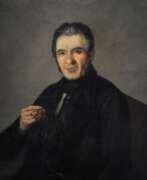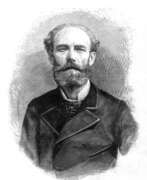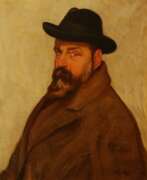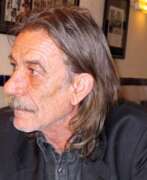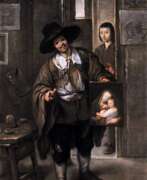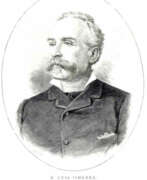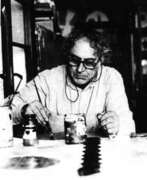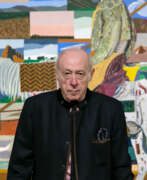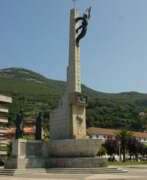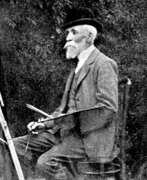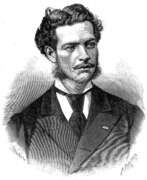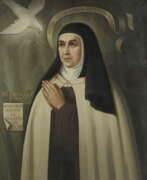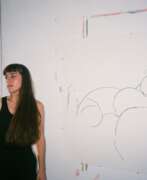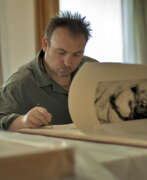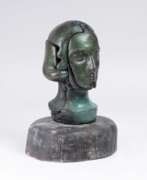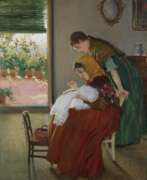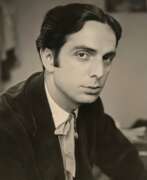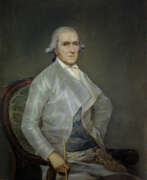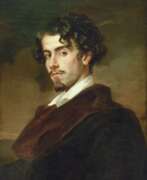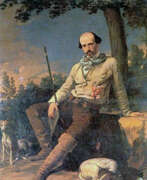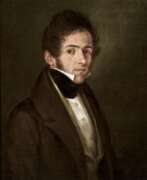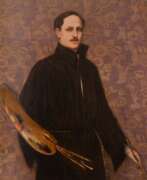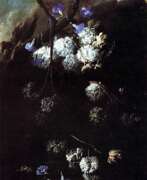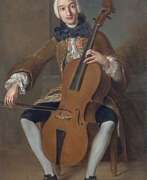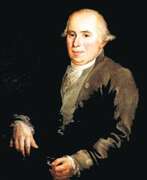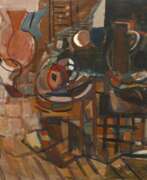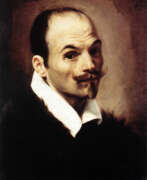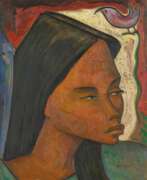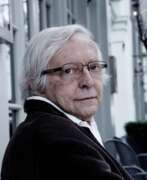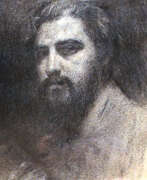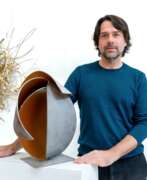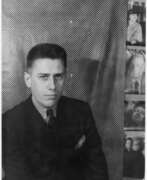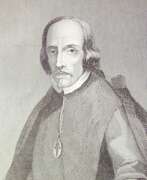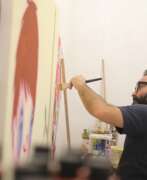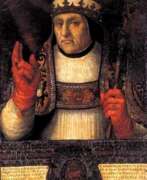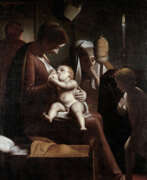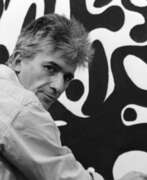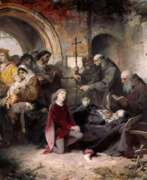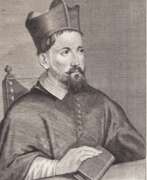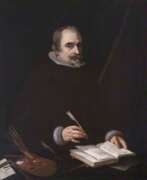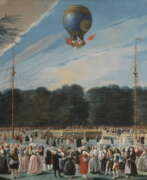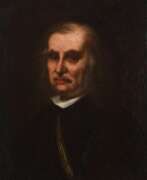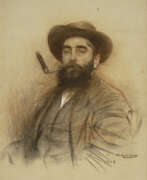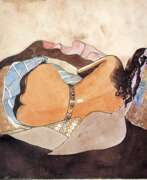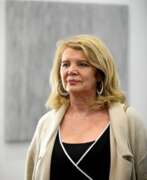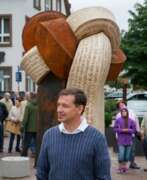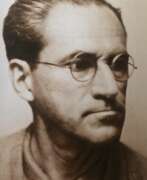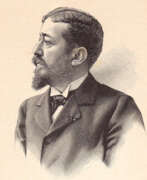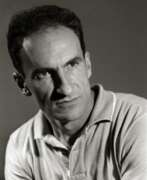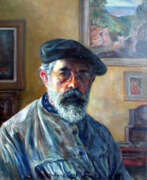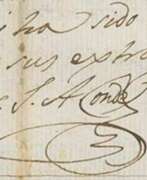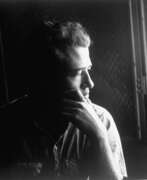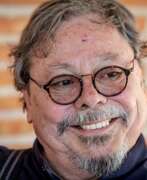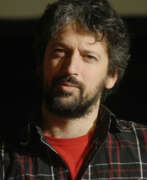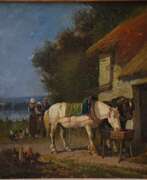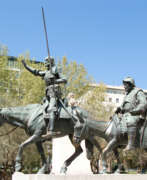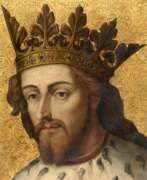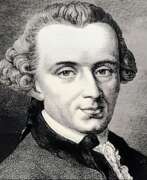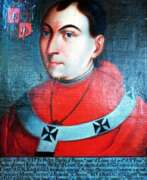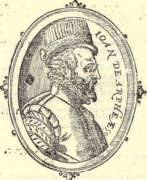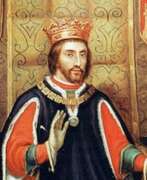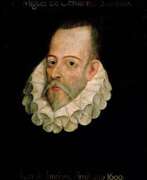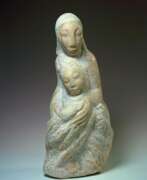Spain
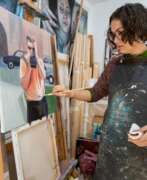

Nuria Farre Abejon is a Spanish hyperrealist artist living and working in Barcelona, Spain.
Her often hyper-realistic works revolve around issues that concern her as a young woman: anxiety, melancholy, family, memories and identity. At first, Nuria created translucent paintings through which she represented the duality between life and death. Later she explored self-portraiture, and today Nuria tries to explore her present through photographs from her family album, through which she creates interesting visual oil collages.
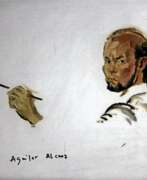

Frederico Aguilar Alcuaz is a Filipino abstract painter, sculptor and ceramist, and master tapestry artist.
He studied painting at the University of the Philippines' School of Fine Arts, then lived and worked both in the Philippines and Spain, and in Brno, Czech Republic, he worked extensively on tapestries.
Alcuaz has earned international acclaim with his vivid abstract works in various genres and techniques, and he has exhibited extensively internationally.
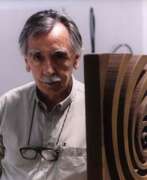

Andreu Alfaro Hernández was a Spanish sculptor.
Alfaro learned the principles of geometry and applied his knowledge to create abstract works. His sculptures are usually full of nuances that play with the module, the series and light and color. He was also described as a minimalist artist, albeit with reservations.
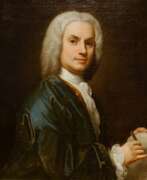

Jacopo Amigoni, also named Giacomo Amiconi, was an Italian painter of the late-Baroque or Rococo period, who began his career in Venice, but traveled and was prolific throughout Europe, where his sumptuous portraits were much in demand.
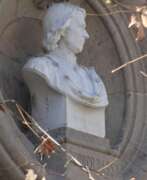

Ferrer Bassa was a renowned Catalan Gothic painter and miniaturist, active in the early 14th century. His artistry not only graced the courts of Aragon but also laid the foundations of the Catalan School of painting. Bassa is celebrated for integrating the traditional Gothic style with French and Sienese influences, creating a unique visual lexicon that was ahead of his time.
Born around 1285, Bassa's career highlights include his work for Alfonso IV of Aragon and the impactful series of frescos in the St. Michael Chapel at the Monastery of Pedralbes in Barcelona. These frescos, executed between 1345-46, are Bassa's most significant surviving works. They showcase an Italianate style, featuring around twenty scenes that focus on the Passion of Christ and the Seven Pains of the Virgin. His work in the Great Canterbury Psalter also stands as a testament to his exemplary skills.
Bassa's contribution to the world of art extends beyond his own creations. He played a pivotal role in the evolution of the Catalan phase of Gothic painting, significantly influencing the period's artistic direction. His legacy was furthered by his son, Arnau Bassa, who continued his father's artistic journey.
For art collectors and enthusiasts, the works of Ferrer Bassa are more than historical artifacts; they are the keystones of Catalan Gothic art. His influence resonates in the works of subsequent artists and continues to inspire modern artistic expressions. For those wishing to delve deeper into the rich tapestry of Gothic art, Ferrer Bassa's works are an indispensable resource.
To stay informed about upcoming sales and auction events featuring Ferrer Bassa's works, we invite you to sign up for our updates. This subscription is tailored for enthusiasts and collectors like you, ensuring you never miss an opportunity to own a piece of this illustrious artist's legacy.
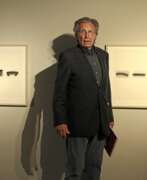

Erwin Bechtold is a German abstract painter and sculptor. He spent some time in Paris, where he had the opportunity to work with Fernand Léger.
Erwin Bechtold was the founder of the artist's group Ibiza 59, whose members sought to create art free of subjective expression. Bechtold's paintings from this period were characterised by minimal geometric forms and the use of a monochromatic colour palette.
Later in his career, Bechtold began experimenting with sculpture, creating large-scale works that explored the relationship between form and space.


Miguel Ortiz Berrocal was a Spanish figurative and abstract sculptor. He is best known for his puzzle sculptures, which can be disassembled into many abstract pieces. These works are also known for the miniature artworks and jewelry incorporated into or concealed within them, and the fact that some of the sculptures can be reassembled or reconfigured into different arrangements. Berrocal's sculptures span a wide range of physical sizes from monumental outdoor public works, to intricate puzzle sculptures small enough to be worn as pendants, bracelets, or other body ornamentation.
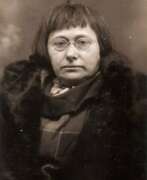

María Blanchard (born María Gutiérrez-Cueto y Blanchard) was a Spanish painter, renowned for her distinctive approach to Cubism. Born in Santander in 1881, Blanchard's early life was marked by challenges, including a physical disability due to a congenital condition. Despite these obstacles, she pursued her passion for art, studying under notable teachers in Madrid before moving to Paris, where she immersed herself in the avant-garde scene. Blanchard's work was characterized by her innovative Cubist style, which she developed through interactions with prominent Cubist artists like Juan Gris. Her paintings, such as "The Lighthouse" and "Still Life with Red Lamp," exemplify her ability to blend geometric abstraction with expressive color and form.
Throughout her career, Blanchard faced personal and financial hardships, yet she continued to evolve artistically, exploring themes of melancholy and isolation. Her significant contributions to Cubism and modern art were recognized in her lifetime, with her works exhibited in major venues and collected by institutions. Blanchard's legacy as a pioneering female artist in the early 20th-century art world endures, with her paintings held in prestigious collections, including the Museum of Modern Art in New York and the Reina Sofia Museum in Madrid.
For art collectors and enthusiasts, Blanchard's work represents not only an important chapter in the history of Cubism but also the resilience and creativity of an artist who overcame significant personal challenges to leave a lasting mark on the world of art. To stay updated on exhibitions and sales related to María Blanchard's work, sign up for updates. This subscription ensures you're informed about new product sales and auction events dedicated to Blanchard's influential and captivating artwork.
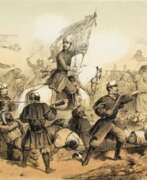

Bernardo Blanco y Pérez was a Spanish lithographer, painter and illustrator.
He studied at the Royal Academy of San Fernando, mainly drawing and lithography, and taught. Bernardo Blanco was one of the artists whose work was included in a series of lithographs on the Spanish-Moroccan War (1859-1860).
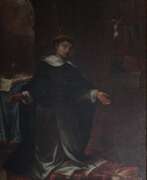

Benito Rodríguez Blanes was a Spanish Baroque painter and Catholic priest, celebrated for his contributions to the Granada School of art. Born in Granada and living through the 17th and early 18th centuries, Blanes became an influential figure in Spanish Baroque painting. He is noted for being a follower of Alonso Cano, a prominent painter of the time.
Blanes' artistic work, deeply rooted in religious themes, is distinguished by its spiritual depth and intricate detail. His works include beautiful paintings of the Virgin Mary, which were once located in the staircase of the archbishop's palace, and the sacristy of the Discalced Carmelites in Granada. Particularly notable are his paintings at the Museo de Bellas Artes de Granada, including a revered depiction of a Dominican saint.
For art collectors and experts, Blanes' works remain a testament to the rich cultural and artistic heritage of the Granada School. His paintings offer a glimpse into the spiritual and artistic expressions of his era.
To stay informed about new product sales and auction events related to Benito Rodríguez Blanes, sign up for our updates. This subscription is a must for enthusiasts and collectors interested in the pivotal figures of Baroque art and the Granada School.
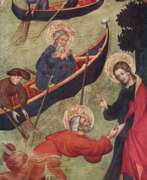

Lluís Borrassà, a prominent Catalan painter, is renowned for revolutionizing the Gothic painting style in Catalonia. Born around 1360 in Girona and possibly deceased in 1426 in Barcelona, Borrassà's contribution to the art world is immeasurable. He was notably employed by the Crown of Aragon, an association that not only enhanced his prestige but also facilitated the spread of his unique artistic style.
Borrassà's art is distinguished by its embodiment of the International Gothic painting style, a movement he is credited with introducing to Catalonia. His works are characterized by their vibrant colors and detailed depictions, elements that were innovative for his time. This distinctive style set a new standard in the region, influencing many subsequent artists and marking a pivotal point in the history of Catalan art.
Among Borrassà's notable works are the panels of the 'Profession of Saint Peter the Martyr' and the 'Beheading of the Relatives of Sant Hipòlit', both of which are now treasured parts of the Gothic art collection at the Museu Nacional d'Art de Catalunya. These artworks not only showcase Borrassà's mastery of color and detail but also provide a window into the cultural and historical context of the period.
For art collectors and experts, Borrassà's work represents a significant chapter in the evolution of European art, particularly within the Gothic tradition. His paintings are not just visual treats but are also rich in historical value, offering insights into the cultural and artistic landscape of 14th and 15th century Catalonia.
To stay updated on sales and auction events related to Lluís Borrassà's works, sign up for our updates. This subscription is specifically tailored for enthusiasts interested in the confluence of art, history, and culture, focusing exclusively on news related to Borrassà's art.
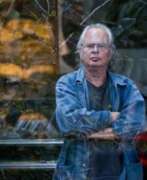

Miguel Rio Branco, full name Miguel da Silva Paranhos do Rio Branco, is a Brazilian photographer, artist, director and creator of multimedia installations.
His father was a diplomat and as a child Miguel lived in Spain, Portugal, Switzerland and the USA, now living and working in Rio de Janeiro, Brazil. After earning a degree in photography from the New York Institute of Photography, Miguel first worked as a cameraman and then worked with the Magnum agency. Miguel is known for exploring and crossing two different art forms: painting and photography. He has also shot 14 short films and eight long films, he is recognized in the world as one of the best color photojournalists.
Miguel Rio Branco's photographs are part of the collections of the Museum of Modern Art and the Metropolitan Museum of Art in New York.
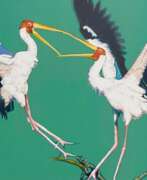

Fran Bull is an American sculptor, painter, and print-maker living and working in Brandon, Vermont and Barcelona, Spain. Bull became known originally for her Photorealism paintings made in the mid 1970s and 80s. In the late 1980s, Bull’s art began to develop towards abstraction, or neo-abstract expressionism. Sparked by her newfound approach to painting, in the mid-1990s Bull began to explore other media. Since that time her artistic output has included performance art, sculpture, mixed media, and printmaking, as well as painting. She has been especially prolific in the area of printmaking. Bull has produced many diverse series of etchings that continue to be exhibited worldwide.
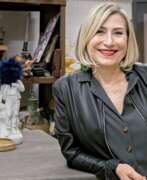

Carmen Calvo, full name Carmen Calvo Sáenz de Tejada, is a Spanish conceptual artist and sculptor.
Carmen Calvo is one of the most representative Spanish conceptual artists of our time. She studied at the School of Arts and Crafts and then at the School of Fine Arts of Valencia, worked in a ceramic factory and since then always incorporates fired clay in her plastic compositions. The artist also works in scenography using photography and other, very diverse formal, technical and thematic resources.
In 2013, Carmen Calvo was awarded the National Award for Plastic Arts by the Ministry of Education, Culture and Sport, and in 2014 she was appointed Academician of the Royal Academy of Fine Arts of San Carlos de Valencia.
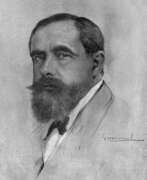

Hermenegildo Anglada Camarasa was a Spanish painter.
Camarasa studied at the Llotja de Barcelona School of Fine Arts under Modeste Urgel, whose work influenced his first landscapes. He moved to Paris in 1894, studying at the Académie Julian and the Académie Colarossi. His colorful style of painting shows a strong Oriental and Arabic influence, and his decorative style is associated with the work of Gustav Klimt.
In the early 1990s, Camarasa opened a painting school attended by many students, including Marie Blanchard. He was one of the founders of the Autumn Salons of Paris and was associated with the artists of the Vienna Secession. Camarasa's works from these years, depicting nighttime street scenes, Parisian cabarets and music halls, attracted the attention of Pablo Picasso, who had recently arrived in Montmartre; he even painted a profile portrait of Anglade.
In 1901 Camarasa took part in an international exhibition in Dresden, where he was a great success. He subsequently exhibited all over the world and was awarded gold medals in Venice (1907) and Buenos Aires (1910). During the war years 1939-1947 the artist lived in exile in France.
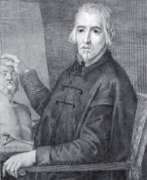

Alonso Cano was a multifaceted Spanish artist, renowned for his remarkable contributions in painting, sculpture, and architecture. Born in Granada in 1601, Cano is often celebrated as the "Spanish Michelangelo", a testament to his diverse artistic talents and significant impact on the Baroque era. His career, marked by a blend of Italian Mannerism and Baroque style, was a journey through various Spanish cities, each phase contributing uniquely to his artistic evolution.
In Seville, Cano trained under Francisco Pacheco, where his initial works like "San Francisco de Borja" (Seville Museum of Fine Arts) displayed a blend of Tenebrism and a brighter, more lyrical color palette. This period also saw the birth of works like "La Visión de San Juan" (Wallace Collection, London), signaling a transition in his style. Madrid, however, marked a significant turn in Cano's career. His works for the Buen Retiro Palace and the Alcázar showcase an evolution towards elegant, dynamic Baroque forms with lighter tonalities, influenced by the 16th-century Venetian masters.
Cano's return to Granada in 1652 was a homecoming that not only reinvigorated the Granada School but also marked his most prolific period. His masterpieces during this time include the series of paintings on the life of the Virgin in Granada Cathedral, a remarkable testament to Baroque art. Notably, his "Inmaculada Concepción" (1648) and "Nacimiento de la Virgen" (1663-1664) in the Cathedral stand as crowning achievements of his painterly career.
Equally impressive is Cano's sculptural work, where his polychrome wooden statue of the Immaculate Conception (1655) in Granada Cathedral is often hailed as his magnum opus. Despite sculpture being a secondary focus to his painting, his works, such as the Inmaculada in San Julián Church, Sevilla, and the smaller, yet exquisitely crafted, Inmaculada of the facistol in Granada Cathedral, resonate with the delicate beauty pointing towards Rococo art.
Cano's architectural prowess is exemplified in the design of Granada Cathedral's façade, an original piece of Spanish Baroque architecture. His artistic journey was not just a personal endeavor but a pivotal influence in the transition of Spanish painting towards a more idealist trend alongside Velázquez.
For art collectors and experts, Alonso Cano's works remain a cornerstone of the Baroque era, showcasing a blend of dramatic realism and spiritual depth. His influence extends beyond the boundaries of Granada, leaving an indelible mark on the world of art and culture.
To stay informed about new discoveries, product sales, and auction events related to Alonso Cano's works, sign up for our updates. This subscription focuses solely on providing relevant news in the art and antiques realm, especially concerning Cano's invaluable contributions.
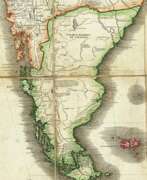

Juan de la Cruz Cano y Olmedilla was a Spanish artist, engraver, and cartographer of the Enlightenment.
Using the most accurate cartographic calculations and methods in the 18th century, he created many geographic maps of Africa and South America, the Strait of Magellan, and others. While in the service of King Carlos III of Spain for many years, Olmedilla mapped Spain and Spanish possessions in Latin America.
Olmedilla also created a multi-volume work devoted to Spanish costume. This collection recorded the various outfits worn by Spaniards, both common and noble, covering all regions of the country and all of its colonies. The topographical and architectural details included in the plates provide additional insight into the mores and geographical features of the various cities and towns depicted. The work was first published in Madrid between 1777 and 1788. These engravings proved incredibly popular and were reprinted in both France and Germany.
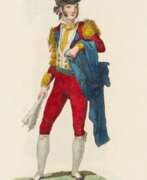

Juan Carrafa was a Spanish cartographer and engraver who worked in Madrid in the 19th century.
He was educated at the Academy of Fine Arts of San Fernando. Among others, Juan Carrafa is known for a large work of more than one hundred engravings depicting the Spanish costume of various regions of Spain, which he produced from drawings by the artist José Ribelles (1778-1835). The prints depict a variety of professions, including bullfighters, gypsies, sailors, merchants, fishermen, students, porters, etc. The selection was published in Real Calcografía from 1825.
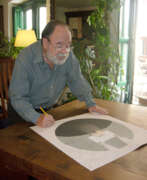

Alfredo Castañeda was a Mexican surrealist painter.
Castañeda had been interested in painting and drawing since childhood, but first became an architect, earning a degree in architecture from the University of Mexico. During his studies, he continued to paint as a hobby, which he became more and more serious about over the years. At university, Alfredo became acquainted with the painter, sculptor and architect Matthias Goeritz, as well as the work of René Magritte. Both played a huge role in the young artist's worldview.
After his studies, Castañeda worked as an architect and in 1969 had his first solo exhibition at Galeria de Arte Mexicano. His work has also been shown internationally numerous times in the United States and in many Latin American countries, including Mexico. His work is collected in collections and museums throughout the Americas, Europe and Asia.
Alfredo Castañeda is known for his surrealist paintings, often portraits. The same character appears in many of his paintings, sometimes revealed in multiple versions of himself. This person (often resembling the artist himself) seems to be engaged in an endless dialog with himself, involving the viewer as well.
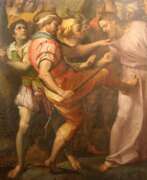

Giovanni Battista Castello was an Italian historical painter. His best-known works are the paintings on the vault of the Basilica della Santissima Annunziata del Vastato. He was an architect and sculptor as well as painter. He painted of the Martyrdom of St. Sebastian in the monastery of San Sebastiano. He worked on various projects with his friend Cambiaso, including in a chapel for the Duomo di San Lorenzo.
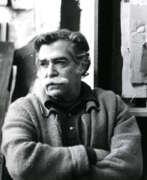

Antoni Clavé was a Catalan master painter, printmaker, sculptor, stage designer and costume designer. He was nominated for two Academy Awards (Best Art Direction and Best Costume Design) for his work on the 1952 film Hans Christian Andersen.
Clavé was one of Spain's best known and most celebrated artists. His work evolved from a baroque, ornamental style to a pure, minimal aesthetic. In his later years, his work is completely abstract, employing expressive lines and exploring the boundaries of collage, objet trove, shading, texture and color. He was trained at the School of Fine Arts, Barcelona, where he was taught by Angel Ferrant and Felix Mestres. With his works being influenced by artists such as Bonnard, Vuillard and Roualt. He is best known for his lyrical abstractions, works which combine paint with collage.
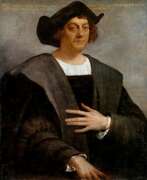

Christopher Columbus (Spanish: Cristóbal Colón, Latin: Christophorus Columbus, Italian: Cristoforo Colombo) was a medieval Spanish navigator of Italian origin who discovered the New World in 1492.
About the exact origin of Columbus scientists argue to this day. He already from his youth had a brilliant knowledge of mathematics, knew several languages, including Latin. Columbus was familiar with the teachings of ancient Greek philosophers and thinkers who depicted the Earth as a sphere, not flat, as was believed in the Middle Ages. Christopher was also trained in the art of navigation and made his first voyages as a young man in the Mediterranean Sea, later sailing to Africa and participating in a northern expedition through the British Isles and Iceland.
Gaining experience, studying geography and maps, Columbus assumed that it was possible to reach India by the western route. He sought financial support from European monarchs, but only the Spanish monarch was interested in the prospects. He agreed and borrowed money to outfit a squadron of ships to find a western route to India.
Christopher Columbus made four historic voyages to the shores of America: August 3, 1492 - March 15, 1493; September 25, 1493 - June 11, 1496; May 30, 1498 - November 25, 1500 and May 9, 1502 - November 7, 1504. Expeditions of Columbus for the first time made information about the lands in the west common knowledge and began the colonization of America by Europeans. But the discoverer of new lands to the end of his life was convinced that he had discovered the richest Western India.
From the last expedition Columbus returned to Spain terminally ill, his last money he spent to pay debts to its participants. Two years later, the discoverer of the New World died in poverty in a small house. Columbus's discoveries, accompanied by the colonization of land, the establishment of Spanish settlements, enslavement and mass extermination of the indigenous population, which he called Indians, were of world significance.
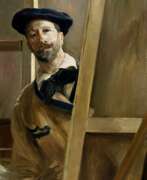

José Villegas Cordero was a Spanish painter, master of costume and genre scenes, who directed the Prado Museum from 1901 to 1918.
He studied at the School of Fine Arts in Seville and became known as a talented genre painter, noting interesting domestic scenes and accurately portraying the characters. Domestic painting at that time was very popular with the public. The artist also deals with the themes of the East, with great skill drawing pictures from sketches he made on a trip to Morocco.
In 1898 Villegas Cordero was appointed director of the Spanish Academy in Rome, and in 1901 he was appointed director of the Museo del Prado, the same museum that had once copied Velázquez's paintings himself while studying his art.
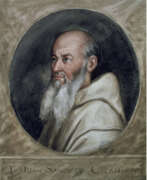

Juan Sánchez Cotán was a Spanish painter, born in 1560 in Orgaz, Toledo, and passed away in 1627 in Granada. He is celebrated for being among the earliest Spanish painters to focus on still life, a genre he significantly influenced before deciding to join a Carthusian monastery at the age of forty-three. Cotán's still lifes are renowned for their simplicity, featuring a few fruits or vegetables, some hanging from fine strings and others placed on a ledge, against a dark, almost impenetrable background. This unique style not only highlights the geometric clarity of the forms but also imbues them with a mystical quality, setting him apart from his contemporaries.
Before embracing a monastic life, Cotán had an established career in Toledo, accepting commissions for religious paintings and engaging in the secular art scene. His transition to monastic life did not halt his artistic pursuits; he continued painting, focusing on religious themes and the history of the Carthusian order. Notably, Cotán's still lifes, such as "Still Life with Quince, Cabbage, Melon, and Cucumber" housed in the San Diego Museum of Art, and "Still Life with Game Fowl" at the Art Institute of Chicago, are among the most emblematic of his work, showcasing his ability to transcend the ordinary and imbue it with profound spiritual significance.
Juan Sánchez Cotán's work is a bridge between the mundane and the mystical, capturing the beauty of simple objects with unparalleled depth and precision. His legacy is a testament to the power of still life as a genre capable of conveying complex themes of spirituality and the natural world. For collectors and experts in art and antiques, Cotán's paintings are not just visually captivating; they are portals to a bygone era that celebrated the beauty in the simplicity of everyday life.
For those interested in exploring the exquisite detail and profound tranquility of Juan Sánchez Cotán's work, signing up for updates on new product sales and auction events related to his art could enrich your collection and deepen your appreciation of this pivotal figure in Spanish art history.
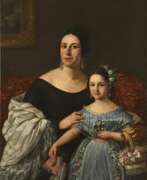

Antonio Gómez Cros was a Spanish painter, lithographer and decorator.
Antonio began studying painting at the Academy of Fine Arts of San Carlos in Valencia and completed his studies at the Royal Academy of Fine Arts of San Fernando. He was a representative of early romanticism with signs of classicism.
Antonio Gómez Cros specialized in historical scenes and was a recognized portrait painter. In 1846 he was appointed honorary chamber painter to Elizabeth II and painted several famous historical, battle and religious paintings in this position. The artist also painted walls and curtains in palaces and theaters.
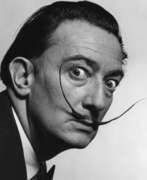

Salvador Dalí, a Spanish Surrealist painter and printmaker, is celebrated for his vivid and imaginative works that delve into subconscious imagery. Born on May 11, 1904, in Figueres, Catalonia, Spain, Dalí's early exposure to Impressionism and Renaissance masters significantly influenced his artistic development. His education in fine arts in Madrid further shaped his style, leading him to experiment with Cubism and avant-garde movements. In the late 1920s, Dalí embraced Surrealism, joining the Surrealist group in 1929 and rapidly becoming one of its most prominent figures.
Dalí's most famous work, "The Persistence of Memory," completed in 1931, epitomizes the Surrealist movement with its iconic melting clocks symbolizing the fluidity of time. His artistic repertoire was diverse, including painting, graphic arts, film, sculpture, design, and photography, often incorporating themes of dreams, the subconscious, sexuality, religion, and science. Despite his remarkable artistic contributions, Dalí's eccentric and flamboyant public persona often overshadowed his work. He faced criticism for his public support of the Francoist regime and the authenticity of some of his late works.
Dalí's legacy is preserved in major museums, notably the Dalí Theatre-Museum in Figueres and the Salvador Dalí Museum in St. Petersburg, Florida. These institutions showcase his extensive and varied body of work, illustrating his profound impact on Surrealism, pop art, and contemporary artists.
If you're captivated by the surreal world of Salvador Dalí and want to stay informed about new sales and auction events featuring his works, sign up for our updates. Our service is tailored specifically for art collectors and experts, providing timely information and insights into the vibrant market of Dalí's art. Remember, this subscription is focused solely on bringing you the latest in product sales and auction events related to Salvador Dalí. Don't miss out on the opportunity to enrich your collection with pieces from one of the most influential surrealists of all time. Sign up now and be the first to know about these exclusive events.


Juan de Arellano was a Spanish painter of the Baroque period.
Juan de Arellano was strongly influenced by Flemish and Italian painters. He specialized in floral still lifes and was recognized as the best master of this genre in Spain. The artist in his paintings often depicted and exotic birds in flowers - the so-called concerts. Paintings by Juan de Arellano are characterized by careful composition and a huge variety of flowers, which the artist wrote out very carefully and authentically.
Floral compositions were very popular in the 17th century, and in time Juan de Arellano became so rich that he opened his own studio, where his three sons also worked and became artists.
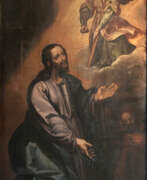

Bartolomé de Cárdenas, a Portuguese painter active in Valladolid and Madrid during the late 16th and early 17th centuries, is a distinguished figure in the world of art. He was recognized for his exceptional skills in painting, notably in creating altar-pieces and decorating convent cloisters. His artistry reflects a deep understanding of light studies and a mastery in rendering highly individualized facial features. His style, shaped by his Madrid training, is marked by a sober dignity akin to that of his contemporary Vicente Carducho.
Cárdenas' works are known for their dynamic composition, precise drawing, and graceful color schemes, displaying his expertise in handling drapery and the human form. Notable among his creations are the iconographic cycles of the Life of Saint Dominic at the convents of Atocha and San Pablo in Valladolid. His paintings for the main altarpiece of the San Pablo convent in Valladolid, including the 'Nativity' and 'Adoration of the Magi', are particularly acclaimed. A defining work of his, the 'Crucified Christ' at the Real Chancillería in Valladolid, demonstrates his interest in tenebrist lighting and a palpable sense of pathos.
Cárdenas' journey as an artist was marked by his move to Madrid following personal tragedies and the patronage of influential figures like the Duke of Lerma. His son, Juan de Cárdenas, also pursued painting, specializing in fruits and flowers. The death of his patron and the completion of his significant works in Valladolid led Cárdenas to return to Madrid, where he passed away in 1628. His legacy remains influential, particularly in the Valladolid School, a testament to his profound impact on Spanish Baroque art.
For art collectors and antique experts, Cárdenas' works offer a glimpse into the rich cultural tapestry of early 17th-century Spain. His paintings, housed in various museums and galleries, continue to captivate audiences with their blend of technical mastery and expressive depth.
To stay updated on sales and auction events related to Bartolomé de Cárdenas, sign up for our newsletter. This subscription will keep you informed about new discoveries and opportunities to acquire pieces linked to this eminent artist's legacy.
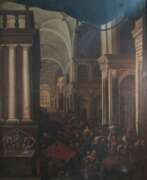

José de Cieza, a Spanish painter, was a prominent figure in the Granada School, known for his expertise in painting in distemper and oil. Born in 1656 in Granada, he was the son and pupil of the painter Miguel Jerónimo de Cieza. José's early years in Granada were marked by his work in religious paintings and decorations for the Corpus Christi festival. His talent was nurtured under the influence of the renowned Alonso Cano and Pedro Atanasio de Bocanegra.
In 1686, José moved to Madrid, where his skills flourished. He painted scenes for the Buenretiro theatre and, in 1689, earned the prestigious title of Painter to the King. His Madrid period was characterized by collaboration with other artists on projects for churches and convents. Notably, his work included paintings for the convent of the Mínimos de la Victoria in Madrid. One of his most famous works from this period, "Aparición de San Francisco de Paula," is housed in the Museo del Prado.
José de Cieza's style evolved from the influence of Cano to the full baroque of the Madrid court. His works are celebrated for their intricate detail and mastery in depicting religious themes. Unfortunately, his promising career was cut short by his untimely death in 1692.
For collectors and experts in art and antiques, José de Cieza’s works remain a testament to the rich cultural heritage of the Granada School. His paintings not only showcase artistic prowess but also serve as historical windows into 17th-century Spanish art and culture.
For enthusiasts and collectors interested in the Granada School, subscribing to updates about José de Cieza’s works is essential. Stay informed about new discoveries, sales, and auction events. Sign up now for exclusive insights into the world of this master painter.
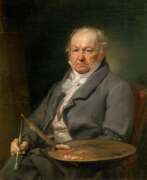

Francisco José de Goya y Lucientes was a Spanish romantic painter and printmaker, celebrated as the most pivotal Spanish artist of the late 18th and early 19th centuries. Born in Fuendetodos, Aragon, Spain, on March 30, 1746, Goya's work reflects a tumultuous period of history, intertwining the personal, political, and social upheavals of his time with a bold and innovative artistic vision. His early career was marked by portraits of the Spanish aristocracy and royalty, as well as Rococo style tapestry cartoons for the royal palace. However, following a severe illness in 1793 that left him deaf, his art took on a darker and more pessimistic tone.
Goya's oeuvre is vast, encompassing around 700 paintings, 280 prints, and several thousand drawings, through which he depicted a wide range of subjects from the whimsical to the macabre. Notable among his works are "The Naked Maja," "The Clothed Maja," "The Family of Charles IV," "The Third of May 1808: The Execution of the Defenders of Madrid," and "Saturn Eating His Children." His etchings, particularly the series "Los Caprichos" and "The Disasters of War," are celebrated for their intricate detail, emotional depth, and critical social commentary.
Goya's contribution to art goes beyond his mastery of painting and printmaking. He is often considered the bridge between the Old Masters and modern art, introducing themes and techniques that would influence countless artists in the centuries to follow. His ability to capture the essence of his era, the human condition, and the complexities of his own psyche, makes his work universally relatable and enduringly relevant.
His most famous paintings are housed in prestigious museums worldwide, including the Museo del Prado in Madrid, which holds an extensive collection of his works. The Prado's collection serves as a testament to Goya's significant impact on art and culture, offering insight into the artist's unique perspective on the world around him.
For collectors and experts in art and antiques, Francisco de Goya's legacy is a beacon of artistic innovation and historical significance. His works not only adorn the walls of museums but also continue to inspire and provoke thought among audiences across the globe.
For updates related to Francisco de Goya, including new product sales and auction events related to his works, sign up for our newsletter. Stay informed on the latest offerings and opportunities to add to your collection of this legendary artist's works.


Bernardo Germán de Llórente was a Spanish painter of the late-Baroque period. He was active in Seville where he was one of the followers of Murillo and made a name with his devotional paintings of the Virgin Mary. He also painted portraits and still lifes with trompe-l'œil effects.


Raimundo de Madrazo y Garreta was a Spanish painter from the Madrazo family of artists who worked in the Realistic style, although his later work shows signs of Rococo and Japanese influence. He was known primarily for his genre paintings and portraits.
